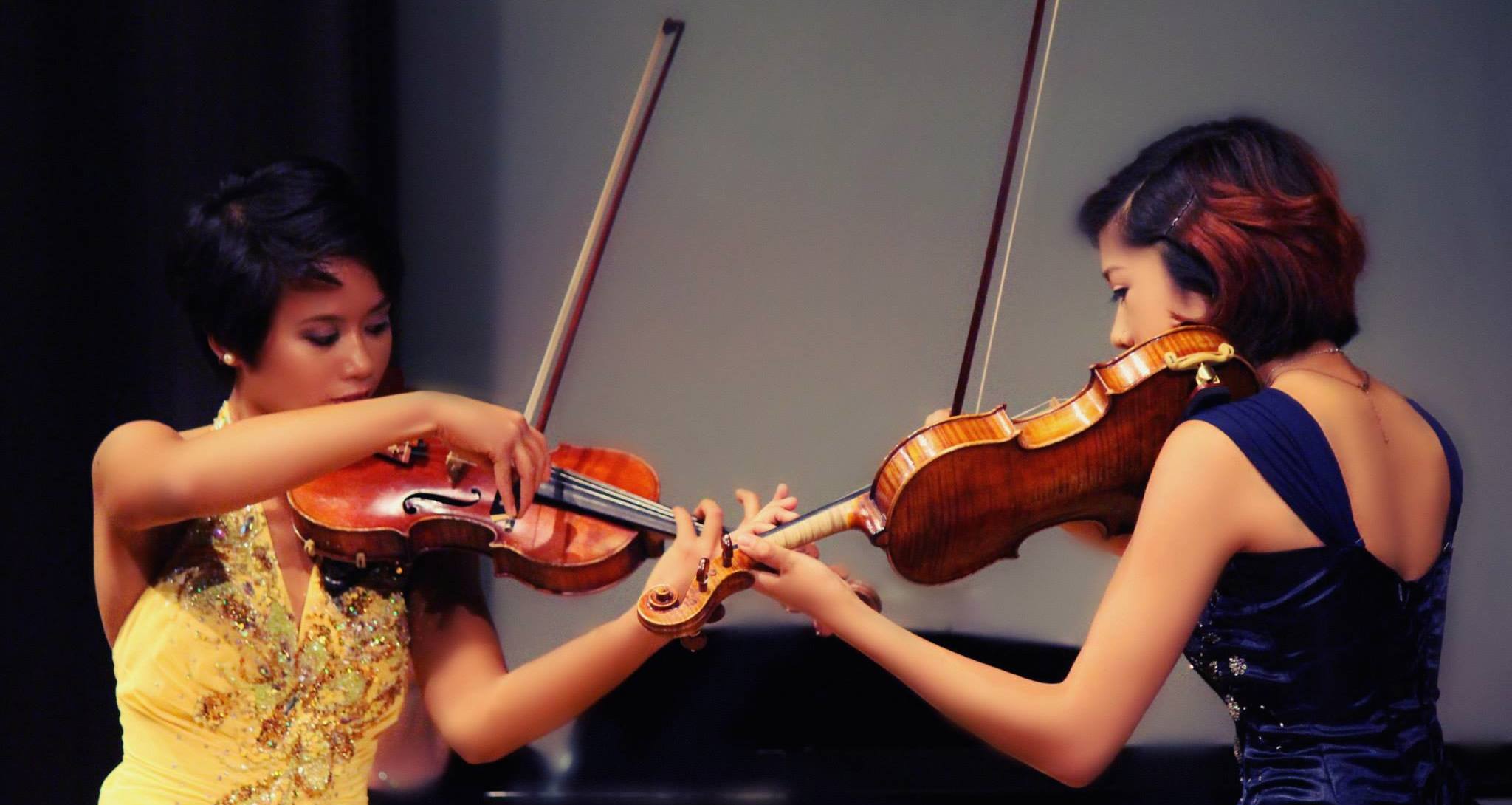| PHYSICS OF VIOLINS | Home |
Brief History |
Violin Body |
Violin Strings |
Chaconne |
Bibliography |

Photo: Property of Carie Navio
 Source "To make the graph at right,
isolated bellies were driven mechanically at
the position of the bass foot of the bridge,
and the acceleration was measured. The graph
gives the ratio for force to acceleration.
If we were vibrating a small mass m, the
ratio would be that mass, independent of
frequency. However, the resonant behaviour
of the plate appears here: the acceleration
produced by a given force is a strong
function of frequency. On this graph, each
major resonance is indicated by an inset
photograph of its Chladni pattern." - Source
FREQUENCY
|
~VIOLIN~STRINGS~
A side of a string on a
violin is rolled around a peg, sits on a
slightly elevated surface above the
fingerboard, lays across the bridge, and is
held on the other side in a tailpiece
(usually containing fine tuners). The violin
is tuned in 5th’s. The highest note is an E,
then “concert A” (440Hz), then D, and lastly
G. When tuned properly, the periodic wave
heard can be analyzed as a sum of pure
tones, similar to when a tuning fork is
struck. But the string isn’t doing all off
the work.
The bridge and the sound
post are very important features to the
sound of the violin, and interestingly
enough, they are not held on the instrument
by glue of any sort, only by pure force. The
soundpost, a thin cylinder piece of wood,
sits on the inside of the violin. The
purpose of the sound post is to anchor the
treble foot of the bridge to the top plate.
The bridge responds to the vibration of the
strings (from bowing) by pivoting, turning
the side-by-side vibrations of the bow to
up-and-down vibrations of the violin belly.
Since each violin is made differently, every
classical violin has a bridge made
specifically for the violin in order to
maximize the sound quality of the
instrument.
On the actual fingerboard
-- where the individual places their fingers
to play notes -- harmonic waves are created.
The shorter the length, the higher the
frequency. Similarly can be said about the
thickness of the string For example,
although the cello also tunes to “concert A”
they have much thicker strings so their
“concert A” is the same note at a lower
frequency. This gives a violin a distinct
timbre, versus other instruments such as the
cello. This timbre is caused by harmonics
and each instrument has a different set of
harmonics. Because the strings vibrate so
fast on a violin, many modes are created.
For a wave, the frequency equals ratio of speed over length of the wave. In Wolfe’s diagram, the string length L is 2L, L, 2L/3, and L/2. Starting with λ/2, the relationship can be written as 2L/n, where n is the number of the harmonic. The lowest frequency is the one that is heard. Since all waves in a string travel at the same speed, different frequencies are on different wavelengths. These modes and the sounds they produce are part of the harmonic series.
Harmonics is used pretty
often in violin music, along with other
types of instruments. For example, if an
individual were to press down on the string
halfway while placing their finger one
quarter the distance of the string (starting
from the scroll side of the violin) a
harmonic on the second string (A string)
would create four times the fundamental
frequency (fourth harmonic) and would sound
two octaves higher. This is the beauty of
waves in music.
|
|||